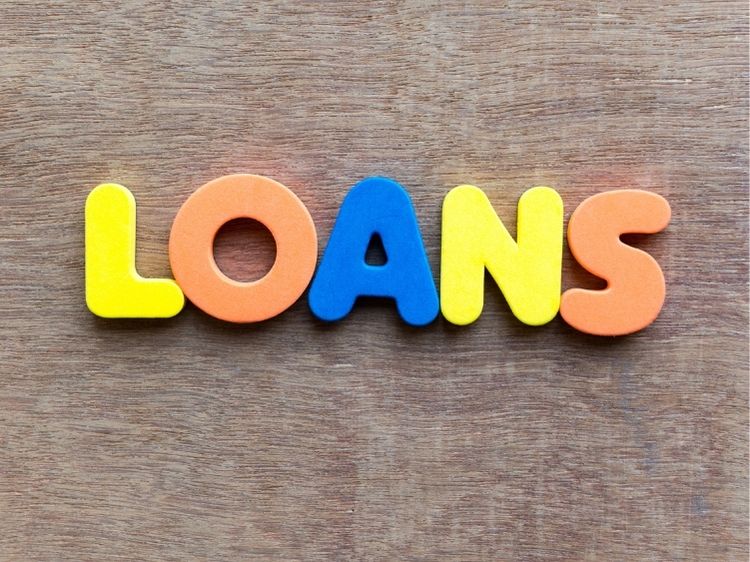So, you’ve been accepted into your dream school! But then comes the dreaded question—how will you pay for it? College costs can add up quickly, and while scholarships and grants help, they often don’t cover everything. Enter the student loan—a lifeline for many students to afford higher education. But before jumping into the world of borrowing, it’s essential to understand how student loans work, their different types, and how to manage repayment wisely.
In this guide, we’ll dive into the ins and outs of student loans, offering practical advice to keep you on track financially. Whether you’re just starting your education journey or are knee-deep in repayment, this article will help you navigate the process.
What is a Student Loan?
A student loan is money borrowed from a lender (the government or a private institution) to cover education costs, including tuition, books, and living expenses. The key feature of a student loan is that it’s expected to be repaid, usually with interest, over time. Unlike scholarships or grants, which are “free money,” student loans come with financial responsibility.
Types of Student Loans
There are generally two main types of student loans: federal and private. Each has its own terms, interest rates, and eligibility requirements.
1. Federal Student Loans
Federal loans are backed by the U.S. Department of Education, offering several benefits over private loans, including fixed interest rates, flexible repayment options, and the possibility of loan forgiveness. Here are the main types:
- Direct Subsidized Loans: Available to undergraduate students with demonstrated financial need. The government pays the interest while you’re in school.
- Direct Unsubsidized Loans: Available to both undergraduate and graduate students, regardless of financial need. You’re responsible for paying the interest from the time the loan is disbursed.
- Direct PLUS Loans: These are available to graduate students and parents of dependent undergrads. They have higher interest rates and require a credit check.
- Direct Consolidation Loans: This allows you to combine multiple federal student loans into a single loan with one monthly payment.
2. Private Student Loans
Private loans are offered by banks, credit unions, and other private lenders. Unlike federal loans, private loans often come with variable interest rates, and repayment terms vary widely. Eligibility depends on creditworthiness, so students with little or no credit may need a co-signer.
The Application Process
Before applying for any student loan, you’ll need to fill out the Free Application for Federal Student Aid (FAFSA). This form determines your eligibility for federal financial aid, including loans, grants, and work-study programs. After submitting your FAFSA, you’ll receive a financial aid offer from your school, which may include student loans.
When applying for private loans, the process typically involves filling out an application with your chosen lender, undergoing a credit check, and securing a co-signer if necessary.
How Interest Works on Student Loans
Interest is the cost of borrowing money, expressed as a percentage of the loan amount. With student loans, interest typically accrues while you’re in school (unless you have a subsidized loan). Once you graduate or drop below half-time enrollment, you’ll enter your repayment period, at which point interest continues to accrue.
Federal loans usually offer a fixed interest rate, which means your rate won’t change over time. Private loans, on the other hand, may have variable rates, meaning they can increase (or decrease) depending on market conditions.
Repaying Your Student Loan
Once you graduate or leave school, you’ll have a six-month grace period before you need to start repaying your federal student loans. During this time, it’s essential to consider your repayment options.
1. Standard Repayment Plan
This plan requires fixed monthly payments over 10 years. It’s the quickest way to pay off your loan but may not be the most affordable, especially if you’re just starting out in your career.
2. Graduated Repayment Plan
Your payments start lower and gradually increase every two years. This plan is helpful if you expect your income to grow over time.
3. Income-Driven Repayment Plans
These plans adjust your monthly payments based on your income and family size. Options include Income-Based Repayment (IBR), Pay As You Earn (PAYE), and Revised Pay As You Earn (REPAYE). After 20-25 years of payments, the remaining balance may be forgiven.
4. Loan Consolidation
If you have multiple federal loans, you can consolidate them into one, making it easier to manage with a single monthly payment. However, consolidation can extend your repayment period, resulting in more interest paid over time.
5. Loan Forgiveness Programs
Under certain conditions, such as working in public service or as a teacher, you may be eligible for loan forgiveness after a specified number of payments. The Public Service Loan Forgiveness (PSLF) program is one of the most well-known options.
Managing Your Loan After Graduation
So, you’ve graduated—now what? Managing your student loan doesn’t have to be overwhelming. Here are some tips to help you stay on top of your payments:
- Set Up Automatic Payments: Many lenders offer an interest rate reduction if you sign up for auto-pay, ensuring you never miss a payment.
- Explore Deferment or Forbearance: If you hit a financial rough patch, you may qualify for a temporary pause in payments through deferment or forbearance. Keep in mind that interest will likely continue to accrue.
- Refinance for Better Terms: Refinancing can lower your interest rate, saving you money over the life of the loan. This option is usually available for borrowers with a solid credit history and stable income.
Common Student Loan Mistakes to Avoid
Taking out student loans is a big financial commitment, so it’s essential to avoid common pitfalls:
- Borrowing More Than You Need: It may be tempting to take out the maximum loan amount, but this could lead to unnecessary debt. Only borrow what’s necessary for your education.
- Ignoring Loan Repayment Options: If your financial situation changes, explore income-driven repayment plans rather than risking default.
- Not Researching Private Loans: Private loans can be tricky. Make sure to shop around for the best rates and terms, and understand how variable interest rates could impact your monthly payments.
FAQs about Student Loans
What’s the difference between subsidized and unsubsidized loans?
Subsidized loans are based on financial need, and the government pays the interest while you’re in school. Unsubsidized loans aren’t need-based, and you’re responsible for the interest from the time the loan is disbursed.
Can I pay off my student loan early?
Yes, federal loans don’t have prepayment penalties, so you can pay them off early without additional fees. However, be sure to inform your lender that you want extra payments applied to the principal, not future interest.
What happens if I can’t make my student loan payments?
If you’re struggling to make payments, contact your loan servicer immediately. You may be eligible for a temporary suspension of payments through deferment or forbearance. Long-term, you might benefit from an income-driven repayment plan.
Are private student loans eligible for forgiveness?
No, private student loans aren’t eligible for federal forgiveness programs like PSLF. However, you may be able to refinance private loans to lower your interest rate or monthly payment.
Conclusion
Student loans are a powerful tool for funding your education, but they come with serious financial responsibilities. By understanding the types of loans available, how interest works, and your repayment options, you can make informed decisions that set you up for long-term financial success. Remember, borrowing is a choice—make sure it’s the right one for you.
Authoritative Sources
- studentaid.gov/manage-loans
- finaid.org/loans/studentloans.phtml
- debt.org/students






